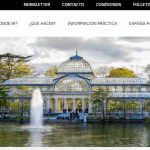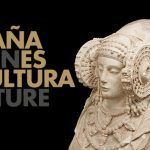The Secretary of State for Tourism, Rosana Morillo, has presented the Smart Tourist Destinations Manual, published in English by Springer under the title “The Spanish Model for Smart Tourism Destination Management: A Methodological Approach”.
This manual, which will also be published in Spanish, aims to enhance the international visibility of the Smart Tourist Destination model by providing the scientific community with Spain’s talent and know-how in terms of innovation and digitalisation promoted by the Secretary of State for Tourism.
In turn, the Secretary of State for Tourism placed an emphasis on “the joint work and multiplier effect” of the Smart Tourist Destinations project and threw down the gauntlet to all destinations and the sector itself to make this project their own.
“This is a long-term project and destinations, with their own specific peculiarities, know better than anyone what they need, which is why we encourage them to work together to respond to shared challenges,” Morillo stressed.
In attendance at the presentation event was executive director of the UNWTO, Natalia Bayona, who demonstrated her support for this model, in which more and more destinations around the world are showing interest; the Chairman of SEGITTUR, Enrique Martínez; the director of R&D&i, Carlos Romero; and representatives from two destinations, Barcelona Provincial Council and the Spanish Network of Smart Cities.
This publication demonstrates how the Smart Tourist Destination methodology exemplifies the materialisation of a work philosophy based on cooperation. SEGITTUR has managed to connect the different levels of the public administration, stakeholders and companies in the public sector; national and international research and knowledge centres, to civil society, citizens residing in the destinations.
Contents of the Manual
The Manual is divided in three blocks; the first reflects on current trends with an impact on the tourism sector, outlining the challenges they represent for destination management, and the responses that a smart destination management model should be able to offer. This is in addition to a historical perspective of the tourism policies implemented in Spain and that have resulted in the creation of the Smart Tourist Destination model.
The second block sets out the methodological foundations of the Spanish model for smart destination management: Its objectives, structure, strategic pillars, areas of action, requirements to be met by areas and monitoring indicators.
The third block sets out a set of tools that aims to facilitate the adaptation and implementation of the model in different contexts: series of good practices, summary of lessons learned, description of how the Smart Tourist Destination Network works; and a reflection on the upcoming work agenda.
The Manual has been curated under the coordination of Lidia Andrades, Professor at the Faculty of Economics and Business Sciences, University of Extremadura.
The authors who have contributed to this Manual include Australian professor emeritus Larry Dwyer, whose contributions in the field of tourism competitiveness management, together with those of Crouch and Ritchie, represent the bases of research in this field; as well as Greek author, Dimitrios Buhalis, professor at Bournemouth University, recognised for his countless publications in the field of technologies applied to tourism.
Professor Sara Dolinicar from the University of Queensland, a researcher renowned for her work in the field of sustainability, has also contributed; as has the Director of the Faculty of Tourism at Toronto Metropolitan University, an expert in tourism research networks, and former president of the European division of the Travel and Tourism Research Association, promoter of the prestigious Journal of Travel Research.
The SEGITTUR team and Spanish authors such as Josep Antoni Ivars-Baidal, David Giner, Aurkene Alzua and María Velasco González have all made contributions to the publication.





